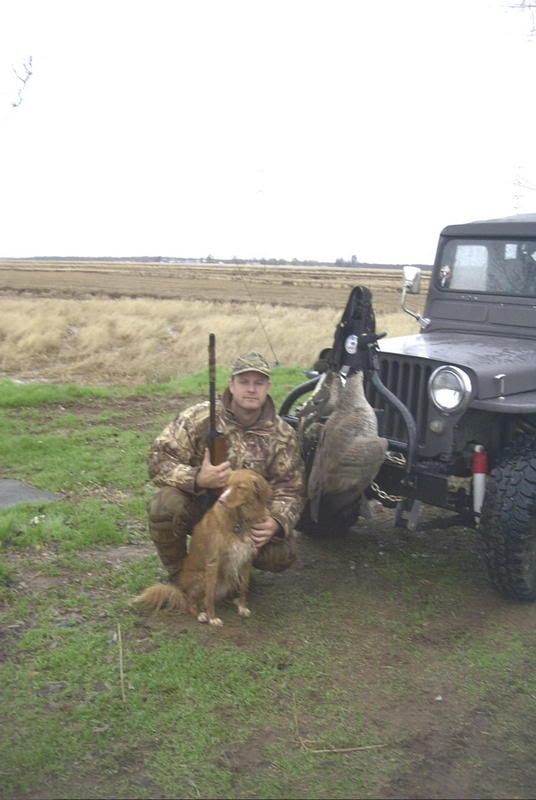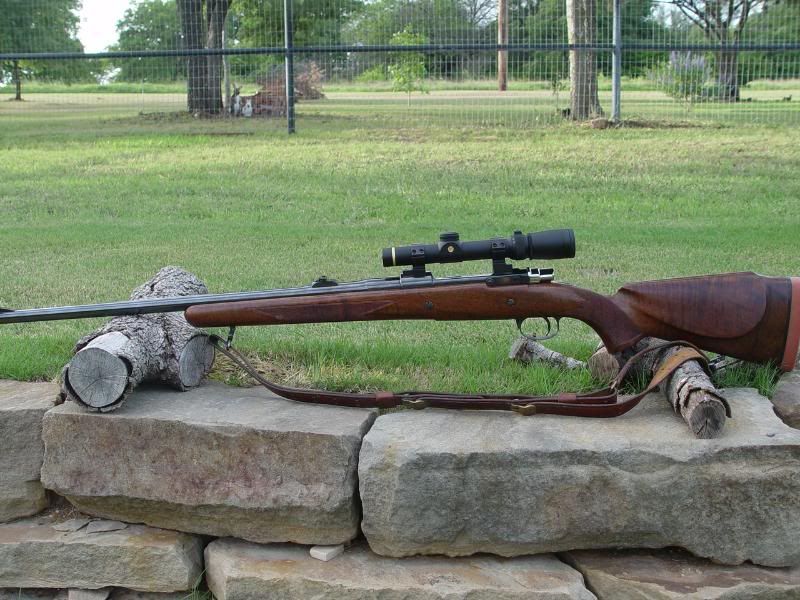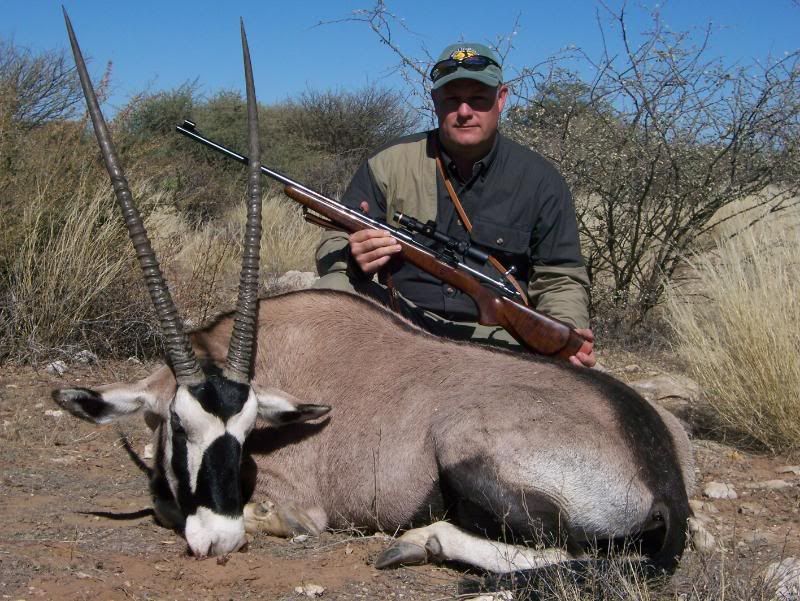

 The Accurate Reloading Forums
The Accurate Reloading Forums  THE ACCURATE RELOADING.COM FORUMS
THE ACCURATE RELOADING.COM FORUMS  Rifles
Rifles  Medium Bore Rifles
Medium Bore Rifles  FN Brownings
FN BrowningsGo  | New  | Find  | Notify  | Tools  | Reply  |  |
| One of Us |
Can you tell me more about these rifles? I have access to one in 375 that I want to rebarrel to 300 H&H. It is the one with the chunky wooden stock but very comfortable. | ||
|
| One of Us |
IIRC they are considered a premium buy. There is some questions about the stock treatment given to some stocks. This article explains what I had already heard. http://en.allexperts.com/q/Gun...ifle-manufacture.htm | |||
|
| One of Us |
Great guns, Like Code4 said just be on the lookout for salt wood. | |||
|
| One of Us |
Thanks. Interesting link and I will have a look. The particular rifle has been in the family for 25 years (hardly used) and has no outward signs of rust. | |||
|
| One of Us |
I have a few of the FN Safari built late 1950s and early 1960s, as mentioned they are really nice rifles. If that 375 H&H is a Long Extractor FN Safari model and salt free, I would think long and hard about rebarreling that puppy. Those 375s are hard to find and worth keeping or selling. | |||
|
One of Us |
You need to pull the barreled action from the stock to be sure. | |||
|
| one of us |
Cane Rat is correct. As far as I know, the only indication will be below the wood. It is my understanding that Browning has quit warranting the salt wood, so if it is prestent,you are on your own. I have seen some salt wood guns, positively identified as such, which have no symptoms. I suspect a lot of it has to do with use and how the under-wood metal was lubricated, and whether local humidity or moisture is a factor. | |||
|
| one of us |
Pull a screw from the buttplate or butt pad to check for corrosion. If salt is present in the wood it will usually show up here first. As others have said, the .375 H&H usually brings a premium in this rifle. Of course, you could pull the barrel and replace it with one for a .300 H&H but keep the old barrel so that it could be reinstalled if and when you wished. Done professionally, I can't see that this would hurt the value of the gun -- and in a place like South Africa where high quality guns are at a premium, it might even enhance its value to have barrels for two different calibers. The challenge might be in duplicating the step contours of the original Browning barrel. | |||
|
| One of Us |
If that 375 H&H is a Long Extractor FN Safari model and salt free, I would think long and hard about rebarreling that puppy. Those 375s are hard to find and worth keeping or selling. I removed the stock and found no indication of rust. I am curious to know more about the salt-treatment and its pros and cons. Also, I think that mine is newer model and not the "long extractor" mentioned. Can someone please explain which is which? | |||
|
| One of Us |
I have a Browning FN Safari grade rifle in 300Win Mag and it is the "long claw" extractor version. Had a 458 Win Mag in Alaska several yars ago and it was of "push feed" variety. Simply put, the push feed version has the extractor in the face of the bolt and similar to Sako type, no bolt length separate extractor running along the right side of the bolt. Have been told the wood for the stocks were dried/treated/cured with a solution containing a salt solution and this would react with the metal over time and create the rust issue. Not absolutely sure, but believe Browning told me that after '64?? the problem was eliminated. The one I have now is of '59 vintage and the 458 much later and no salt/rust problems with either. Most likely yours being of later mfg. it would not be a salt gun as they are referred to by most. Be it push feed or long claw extractor version, these rifles are considered of high quality and in demand. | |||
|
| one of us |
as I recall the salt guns are only an issue between somethink like 1968 - 1974 ( I could be off by a year or so on either end ); if this particular rifle was built prior to this then it's not an issue ... Best Regards, Craig Nolan Best Regards, Craig Nolan | |||
|
| new member |
It does not sound like yours is a salt wood stock. Use this link to determine the year of manufacture of the rifle you are looking at. http://proofhouse.com/ I have a 1959 Browning Safari in 3006 and it is an excellent rifle. Extremely smooth and accurate it is a pleasure to shoot. My understanding is the salt was used to decrease the drying time of some of the walnut they were using in the late 60's (68 or 69, not sure, through to the mid 70's.) The issue was it did take water out of the wood faster but the wood apparently took in some of the salt and under the wrong conditions let it out to interact with the metal. Hence tyhe corrosion that can be run across. Sounds like a nice rifle. | |||
|
| One of Us |
+1; Keep it a 375
| |||
|
One of Us |
Here is a salt wood browning made in 72. It had minimal surface rust. It is by far one of my most accurate rifles   Jason Z Alberts “If ye love wealth better than liberty, the tranquility of servitude than the animated contest of freedom, go from us in peace. We ask not your counsels or arms. Crouch down and lick the hands which feed you." – Samuel Adams | |||
|
| One of Us |
Good-looking rifle, Sactoller. What cartridge is it in and what bullet? Mine has a lighter-coloured stock. | |||
|
| Powered by Social Strata |
| Please Wait. Your request is being processed... |
|

Visit our on-line store for AR Memorabilia

